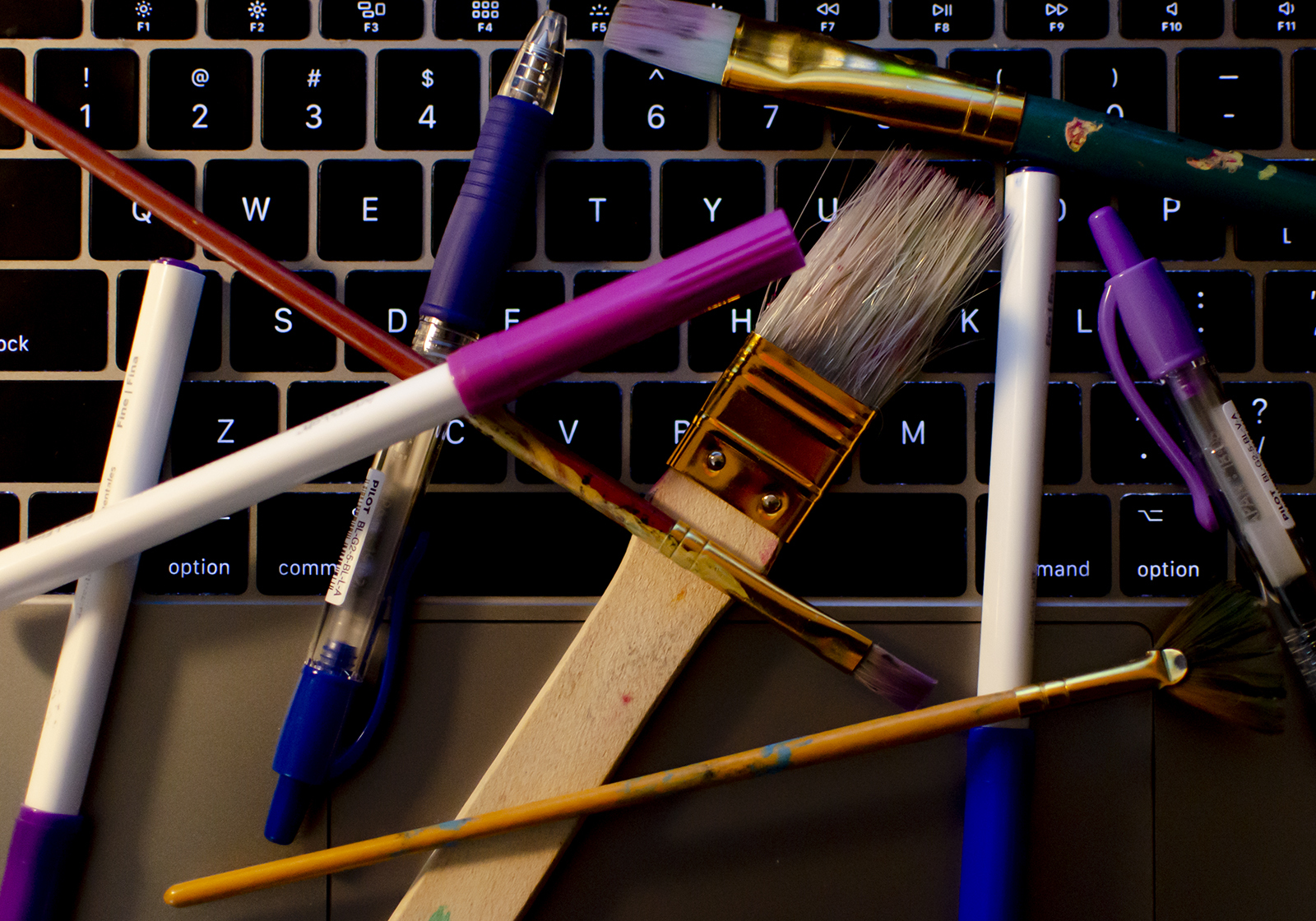With online instruction, DESMA classes foster collaboration and creativity

Visiting design media arts lecturer Yogan Muller said he has adjusted to the current pandemic by shifting his lesson plans, giving the option to choose a research topic for students’ final project and introducing new graphic design techniques. He said he has utilized Zoom features like breakout rooms. (Kanishka Mehra/Assistant Photo editor)
By Ashley Lifton
April 22, 2020 3:39 p.m.
Quarantine has done little to stifle the UCLA art community’s creativity.
The switch to online classes in response to COVID-19 has left a major impact on art students who rely heavily on visual learning to complete their classes, said Yogan Muller, a visiting design media arts lecturer. Muller said he has adjusted his lesson plans by giving students the freedom to choose a research topic for their final project and spending class periods reviewing their homework, introducing new graphic design techniques, and discussing their creative endeavors outside the classroom.
“I try to maintain my sense of presence, which is one of the main missions as an instructor,” Muller said. “Teaching online is hard to do in its entirety, and it is my duty to accommodate those who need help.”
[Related: English Fiat Lux classes center around understanding, studying COVID-19’s impacts]
To make his lectures mirror a real-life classroom, Muller is utilizing screen sharing and the breakout rooms setting on Zoom, which allows the lecture to condense into more intimate gatherings.
To further foster this collaborative environment, Muller co-teaches the course Design Media Arts 154: “Word + Image” with professor Rebeca Méndez and graduate student Zeynep Abes. Although online instruction limits the artistic resources students have at their disposal, Muller said Zoom and email offer opportunities for students and professors to discuss their creative work.
This collaboration is crucial when it comes to deciding on a creative project topic, so Abes said professors need to ensure an engaging learning environment. Since she worked as a teaching assistant last year, Abes said she was able to see how the course operated within the classroom and now aims to encourage more one-on-one time with her students.
While in regular instruction, Abes said students rarely attended office hours early in the quarter, but online instruction has encouraged more interaction. This increased communication helped ease the online transition and made the students more compelled to discuss their creative ideas for future projects, Abes said.
“Online instruction feels more intimate to me because I have been meeting students in my office hours one on one,” Abes said. “I have had more productive office hour meetings with the students just talking to them and making sure they are all doing OK.”
[Related: Bruin Origami For All folds paper into hope in online Zoom sessions]
For their first project, students will choose a topic pertaining to a pertinent ecological phenomenon that piques their interest. They then conduct investigative research and present their findings through graphic design. Muller said many artists rely on human interaction to bounce ideas off one another in these freeform style assignments. But the online class’ interactive format assures students can have their voices heard and connect with other people despite the physical distance, Abes said.
Connecting through the screen in this way has become the new normal for art students in quarantine. Professor Erkki Huhtamo, who is teaching the Fiat Lux seminar Design Media Arts 19: “UCLA Centennial Initiative: Media Culture and First 100 Years,” said he is doing live online lectures as opposed to prerecorded ones to keep his students engaged with the material. Huhtamo said he also utilizes the chatbox on Zoom to effectively answer questions and incorporates visuals such as videos from his own collection to keep students invested.
“I don’t find it unpleasant to teach from my home because I have access to all my archives and materials,” Huhtamo said. “I show things through my laptop camera and external video camera and have noticed there are many positive possibilities in this form of teaching.”
Without access to campus resources such as the print lab and art supplies, it may seem as if the arts community is at a disadvantage. Students may not have all their usual resources, but Huhtamo said collaboration and collective creativity with their professors help them express themselves through art.
“I don’t think there is anything useful in being negative about things,” Huhtamo said. “Life can be unpredictable, and when unpredictable circumstances happen we have to adjust ourselves to those things, and if we are lucky we will discover something new.”

